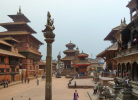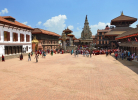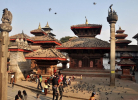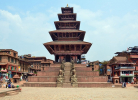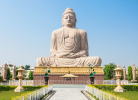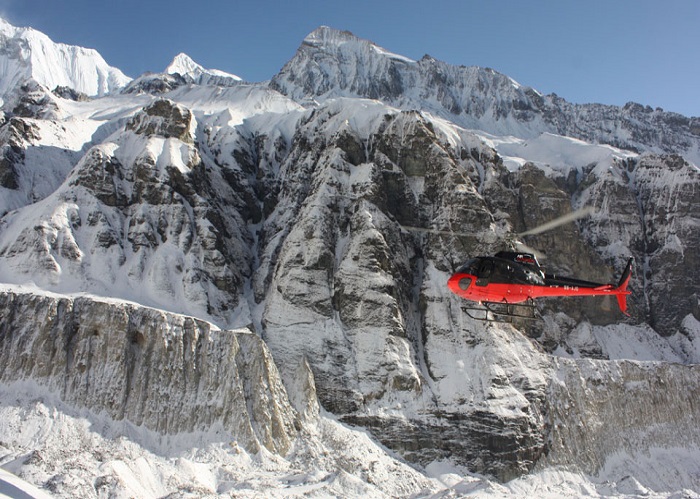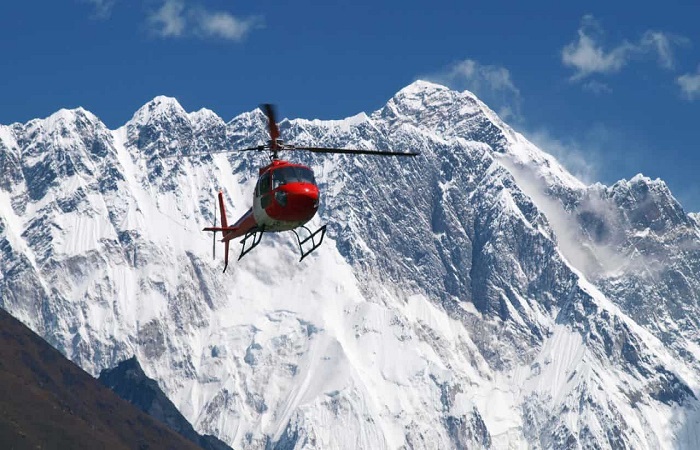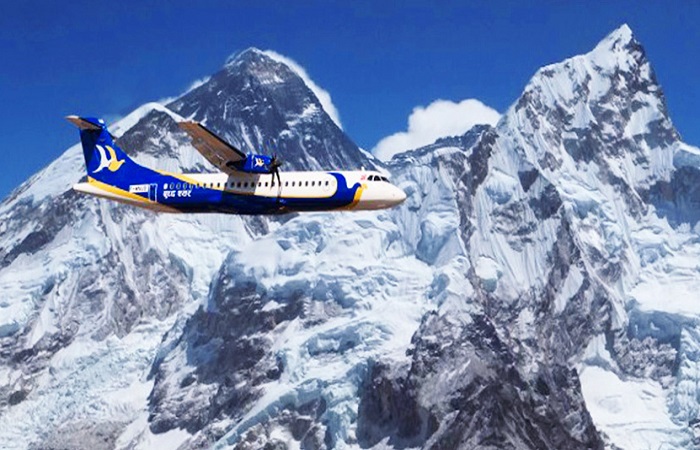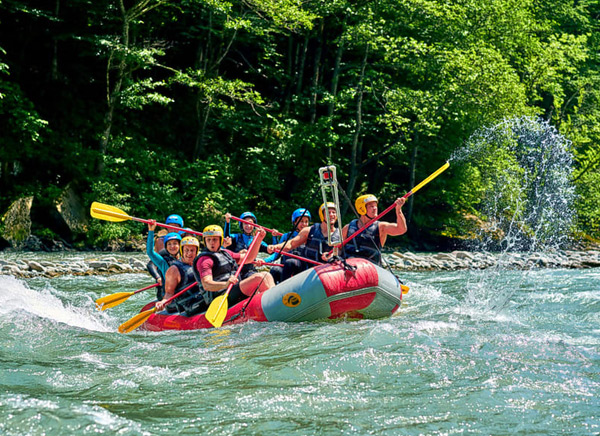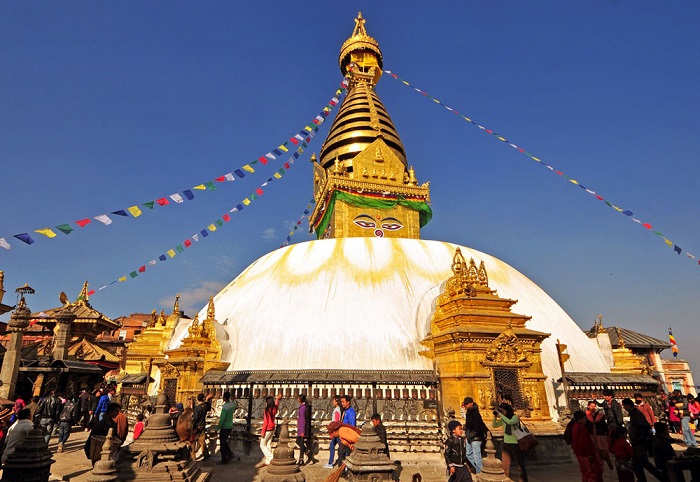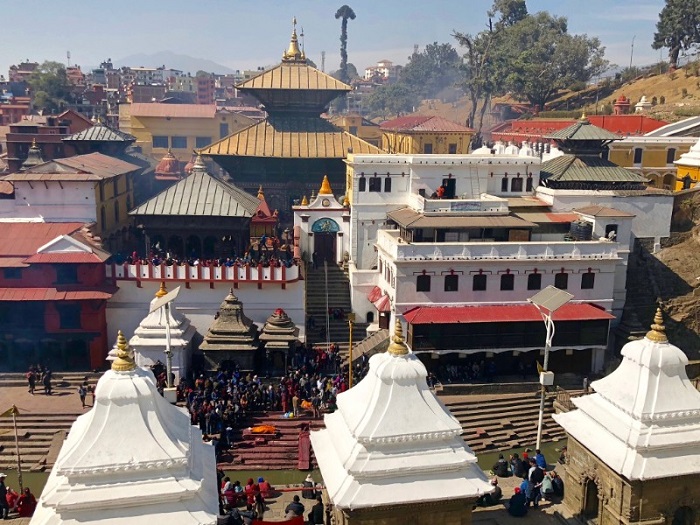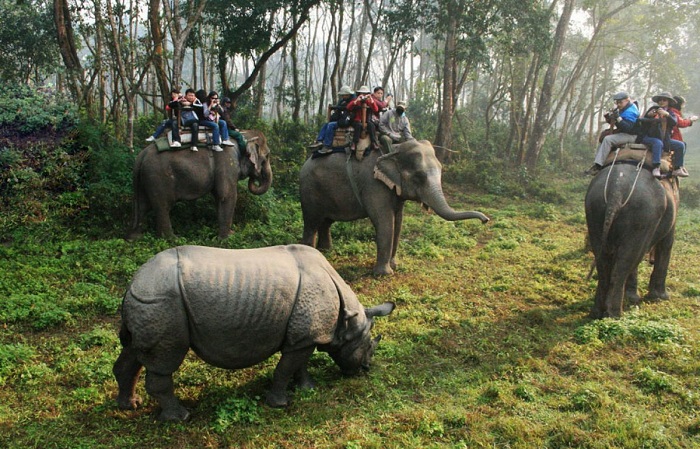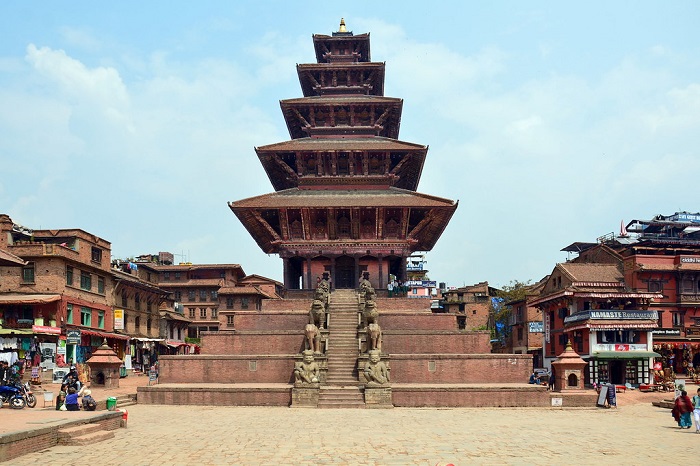Sagarmatha National Park, Nepal
Nepal’s snow-capped mountains, rugged terrains, and lush greenery forests portrays the country’s real beauty and grace. To meet such a place with all attractions and qualities that centralizes the tourism of Nepal is the “Sagarmatha National Park”. In the Northeast of Nepal, Sagarmatha National Park is an iconic attraction which is home to the world’s highest peak Mt.Everest. The park with deep ravines, numerous peaks, scenic attractions, rivers, glaciers, and many more surprises everyone with its stunning attractions.
If you are in a mood to explore Nepal then try to add this Park in your bucket list. Here you will get everything about the Sagarmatha National Park.
About Sagarmatha National Park
The word Sagarmatha derives Sagar means “Sky” and Matha means “Head”. It is a Nepali word. This national park was located in Solukhumbhu District and it occupies 1,148sqkms area. Sagarmatha is the world’s highest national park extended with ranges from 2,845mts to 8,848mts high. It shares boundaries with Qomolangma National Nature Preserve in the north, Makalu Barun National Park in the east, and Dudh Kosi river in the south.
An interesting thing about this park is a mix of different land areas. Some areas in the park look with dense forests, some other with barren lands and some with snow-capped mountains. Like these different landscapes of Sagarmatha will make everyone stun. Apart from the Mt.Everest, many other famous peaks in the park are great attractions. Nuptse, Lhotse, Cho Oyu, Thamserku, Pumori, Ama Dablam, are some of the renowned peaks and they record more than 6,000mts high.
In addition to all these, the villages of Sherpas in this park is another great attraction. Their culture, traditions, and lifestyle seem to be very interesting. Overall Sagarmatha National Park is a blend of various attractions and interesting things in Nepal.
Conservation History of Sagarmatha National Park
In 1976, Sagarmatha National Park was established. Within a span of three years, in 1979 the park was recognized as the Natural World Heritage Site and also it is the first park in the country recognized under this. For tourists, this national park was opened from the 1960s. From the day the population of visitors became larger and larger. According to stats, in 2003 nearly 19,000 tourists visited but at present, the count reached nearly 30,000 visitors annually. Here the numbers show its crazy.
In January 2002, the buffer zone was introduced in the park by allotting 275sqkms area land. This zone was introduced to conduct programs such as conservation of forests, wildlife, natural and cultural resources. Especially for the development of alternative energy, this zone was undertaken in the park.
Flora of Sagarmatha National Park
In this park, you can experience the different shades of vegetation how it will be near the Himalayas. Because Sagarmatha National Park is located in the Himalayas, so you can go through various kinds of trees, shrubs, plants, and etc a lot. The floral wealth of the park can easily divide into two parts as vegetation at higher altitudes and lower altitudes.
At lower altitudes, you can find thick green forests with rhododendrons, blue pines, fir, birch, juniper, bamboo, hemlock, etc. After 3,500mts, you can spot the beautiful Rhododendron forests. From late March to September, the flowers will bloom. At these months you can capture the scenic views of the Rhododendron forests.
At higher altitudes, you can see dwarf shrubs, mosses, and lichens. Because at higher altitudes conditions will not so favorable for thick vegetation. That’s why after 5,000mts high, only 3% of the area was forested. And also after 5,750mts elevation permanent snow line of the Himalayas starts so no plant will survive here.
Fauna of Sagarmatha National Park
With thick forests, Sagarmatha National Park provides shelter to many endangered animals and birds. Notably, for bird species, this park is very famous. Due to the reason, this park was known as “Important Bird Area”. At this park, nearly 118 bird species are getting shelter. Among them, Blood pheasant, Snowcock, Himalayan monal, red-billed chough, and etc are the rare and important bird species.
When it comes to animals, this park is home to many rare mammal species. They are musk deer, red panda, Himalayan black bear, Himalayan Tahr, Ghoral, langur monkeys, and many more. Snow Leopard can also see in this park but chances are very low to find. However, here wildlife seems to be different with thick furs and stout bodies because of cold climatic conditions.
Tourist Attractions in Sagarmatha National Park
Within the park, some fantastic spots excite every traveler to witness them. Mt.Everest, Gokyo Lakes, Kala Pathar, Dudh Kosi, and Tengboche Monastery comes in the list. Just have a look at these wonders of Sagarmatha.
1. Mt.Everest
Throughout the park, Mt.Everest is the key attraction. To climb it, a large number of adventure lovers hike to Sagarmatha National Park. In the way climbing to the Mt.Everest, many things such as beautiful mountains, valleys, and villages stoles the heart of the traveler. If not affordable climbing to Mt.Everest, trekking to the Everest Base Camp is also a worthy thing to do.
Get Complete Guide : About Everest Base Camp
2. Gokyo Lakes
At the upper catchment areas of the Park Gokyo lakes are located. They are the world’s highest freshwater lakes located at an altitude of 4,700mts to 5,000mts high. For adventure thrillers, trek to these lakes is a good thing to enjoy. The spectacular views of the surrounding mountains and environment at these lakes is just mind-blowing. If possible take a camp at these lakes to enjoy the scenic beauty and pleasant atmosphere.
Get Complete Guide : About Gokyo Lakes
3. Dudh Kosi
Dudh Kosi river is a bewitching place in the park with stunning views. The gushing river flows through rugged terrains and surroundings with lush greenery seem to be awe-inspiring. For a relaxing treat, a visit to Dudh Kosi is the must. The serene environment here relaxes your mind and soul.
4. Tengboche Monastery
It is a famous Buddhist monastery in Khumbu region of the park. This monastery was located in the middle of the park which is close to the Himalayan mountains. From here you can capture the splendid views of Mt.Everest, Nuptse, Lhotse, Tawache, Thamserku, and Ama Dablam peaks. To enjoy the scenic backdrops of the Himalayan peaks this monastery is the best place.
5. Kala Patthar
Kala Pathar is the name for its mesmerizing views of Mt.Everest in Nepal. It is the famous viewpoint located in the Sagarmatha National Park at an altitude of 5545mts high. From this viewpoint, you can seize the clear crystal views of the Mt.Everest and many other peaks of the Himalayas. If you miss this place your trip to Sagarmatha National Park is incomplete and not worthy.
The climate of the park varies from Semi-arid subtropical to temperate type. Also, medium to heavy rainfalls will receive to the park. In between the months of July to September heavy rainfalls affects the park with an average of 1000mm. In winter months, temperatures will fall down to minus degree Celsius and the area gets very cold and freezing.
After limiting the above mentioned times, the best time to enjoy the beauty of the Sagarmatha National Park is between the months of October to November and March to May. During these months a moderate temperature will observe in the park. So for a clear and safe trip better try to visit in these months.
Entry Fee and Timing of Sagarmatha National Park
To get entry to the park, you have to get a pass. It will be provided at the visitor centers of Sagarmatha National Park. There are two centers at Monzo and Namche Bazaar. Here you will get the pass for the entrance of the park. With this pass, you can visit all the places in the park. The cost of the pass varies as mentioned below.
Nepalese : 150/- Rs per head.
SAARC Countries : 1,500/- Rs per head.
Foreigners : 3,000/- Rs per head.
There will be no charge for children below 10 years.
Timings : 24 hours of the day the park gets open. But visiting at night times is not a preferable thing because wild animals can harm you and conditions also may not good during nights.
How to Reach Sagarmatha National Park
Sagarmatha National Park is located in a remote area so getting to the park is a hard thing and also the road network was not there. The only thing to do is taking flight from Kathmandu to Tenzing Hillary airport at Lukla. From Lukla, the park was 35kms far away. Through trekking, you can reach the park.
Through some roadways also you can reach the park but the trek time takes nearly 10 days to visit the park. So it is better to take flight.
The climate of the park varies from Semi-arid subtropical to temperate type. Also, medium to heavy rainfalls will receive to the park. In between the months of July to September heavy rainfalls affects the park with an average of 1000mm. In winter months, temperatures will fall down to minus degree Celsius and the area gets very cold and freezing.
After limiting the above mentioned times, the best time to enjoy the beauty of the Sagarmatha National Park is between the months of October to November and March to May. During these months a moderate temperature will observe in the park. So for a clear and safe trip better try to visit in these months.
Entry Fee and Timing of Sagarmatha National Park
To get entry to the park, you have to get a pass. It will be provided at the visitor centers of Sagarmatha National Park. There are two centers at Monzo and Namche Bazaar. Here you will get the pass for the entrance of the park. With this pass, you can visit all the places in the park. The cost of the pass varies as mentioned below.
Nepalese : 150/- Rs per head.
SAARC Countries : 1,500/- Rs per head.
Foreigners : 3,000/- Rs per head.
There will be no charge for children below 10 years.
Timings : 24 hours of the day the park gets open. But visiting at night times is not a preferable thing because wild animals can harm you and conditions also may not good during nights.
How to Reach Sagarmatha National Park
Sagarmatha National Park is located in a remote area so getting to the park is a hard thing and also the road network was not there. The only thing to do is taking flight from Kathmandu to Tenzing Hillary airport at Lukla. From Lukla, the park was 35kms far away. Through trekking, you can reach the park.
Through some roadways also you can reach the park but the trek time takes nearly 10 days to visit the park. So it is better to take flight.


